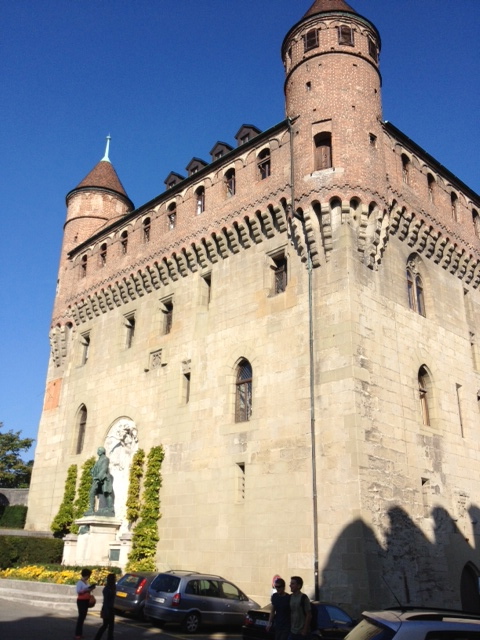 From the shores of Lake Geneva, or Lac Léman as the Swiss call it, to the forest and duck pond of Lac de Sauvabelin, the city of Lausanne climbs an impressive 800 feet. You climb uphill or downhill on an Escher-like maze of stairwells, narrow cobblestone streets, bridges, even elevators and escalators. Last night, I took an elevator close to my hotel, the Lausanne Palace, down to the former warehouse district of Flon, now a Tribeca-like neighborhood of hip restaurants like Le Nomade and popular dance clubs like Mars. It’s quite strange to take an elevator down to another neighborhood, but Lausanne is full of surprises, from the massive Gothic cathedral consecrated in 1275 to Jean Dubuffet’s fascinating Art Brut collection, created for the most part by people who are ingenious or simply insane (I’ll delve into this further tomorrow).
From the shores of Lake Geneva, or Lac Léman as the Swiss call it, to the forest and duck pond of Lac de Sauvabelin, the city of Lausanne climbs an impressive 800 feet. You climb uphill or downhill on an Escher-like maze of stairwells, narrow cobblestone streets, bridges, even elevators and escalators. Last night, I took an elevator close to my hotel, the Lausanne Palace, down to the former warehouse district of Flon, now a Tribeca-like neighborhood of hip restaurants like Le Nomade and popular dance clubs like Mars. It’s quite strange to take an elevator down to another neighborhood, but Lausanne is full of surprises, from the massive Gothic cathedral consecrated in 1275 to Jean Dubuffet’s fascinating Art Brut collection, created for the most part by people who are ingenious or simply insane (I’ll delve into this further tomorrow).
The next day we started with a tower climb at Lac de Sauvabelin for magnificent views of the lake, snow-capped peaks of the Alps, and the Vallée de Joux, known for its communities of watchmakers. Then we walked downhill past century-old beech trees on the grounds of
Fondation de l’Hermitage. Soon we were in the oldest part of the city, staring up in awe at the 15th-century Château Saint-Maire and the 13th-centutry Lausanne Cathedral. Definitely enter the cathedral to see the stained windows, including the Rose, where more than half the glass is original. Under a bridge in the charming Escaliers du Marché neighborhood, we found
Le Barbare, known for its pudding-like hot chocolate.
Saturday is the best day to visit Lausanne in the summer and fall, because its home to a thriving public market. We made it to the bustling center of town, packed with locals on a warm day picking at bins that overflowed with ripe tomatoes, plums, sunflowers, and a slew of other merchandise. One section was devoted to local butchers and cheesemakers. Another street, we tried chocolate truffles and a delectable wild mushroom dip. Near the market, we had lunch at
Café du Grütli to sample a Swiss specialty this time of year, saucisse aux choux, sausage marinated with cabbage. Then we entered Globus, Lausanne’s version of Harrods, to purchase a raclette set for our son. Our last stop was
Blondel, a beloved chocolate shop in town, where we purchased more souvenirs for the family. Geneva, a 45-minute train ride away might be the better-known city on Lake Geneva, but Lausanne easily entices.
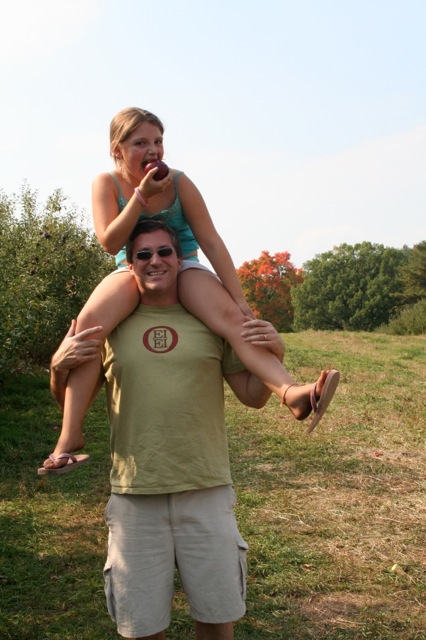 There’s no better fall activity in New England than hitting an orchard, trying the variety of apples, buying homemade cider, and tasting the warm, just made doughnuts. We have photographs of the kids picking apples every year, and like the trees, they seem to sprout up far too quickly. My son has a short break from college and is coming home tonight, so I’m hoping to get to the orchards on Sunday. I’m a fan of cortlands and macs, which are probably gone by now, but I don’t care. It will be great to get out there and climb those trees, even when I’m not supposed to be climbing those trees! Have a great Columbus Day Weekend and keep active!
There’s no better fall activity in New England than hitting an orchard, trying the variety of apples, buying homemade cider, and tasting the warm, just made doughnuts. We have photographs of the kids picking apples every year, and like the trees, they seem to sprout up far too quickly. My son has a short break from college and is coming home tonight, so I’m hoping to get to the orchards on Sunday. I’m a fan of cortlands and macs, which are probably gone by now, but I don’t care. It will be great to get out there and climb those trees, even when I’m not supposed to be climbing those trees! Have a great Columbus Day Weekend and keep active! 
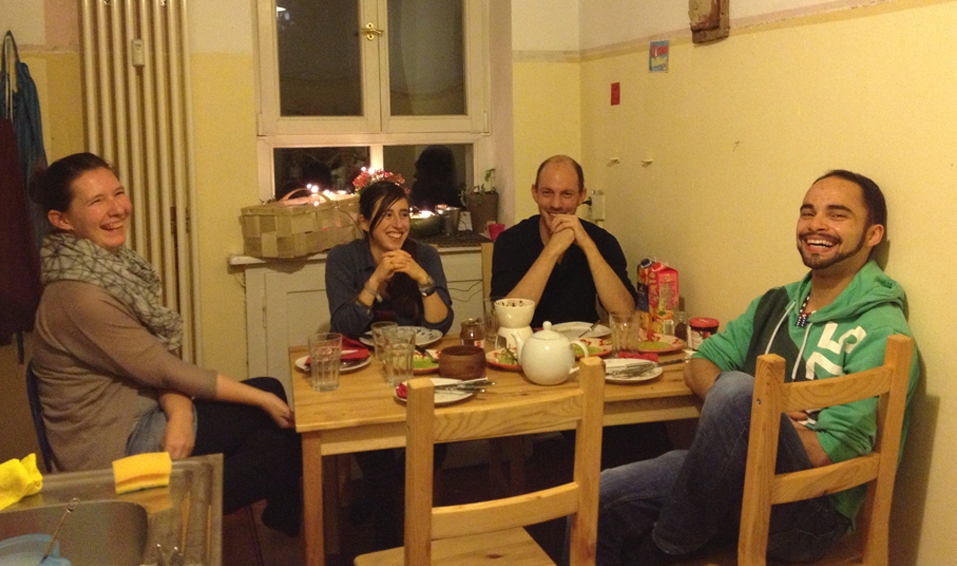 I recently wrote a column for Men’s Journal on
I recently wrote a column for Men’s Journal on 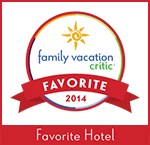 Since 2008, I’ve written over 120 hotel and destination reviews for
Since 2008, I’ve written over 120 hotel and destination reviews for 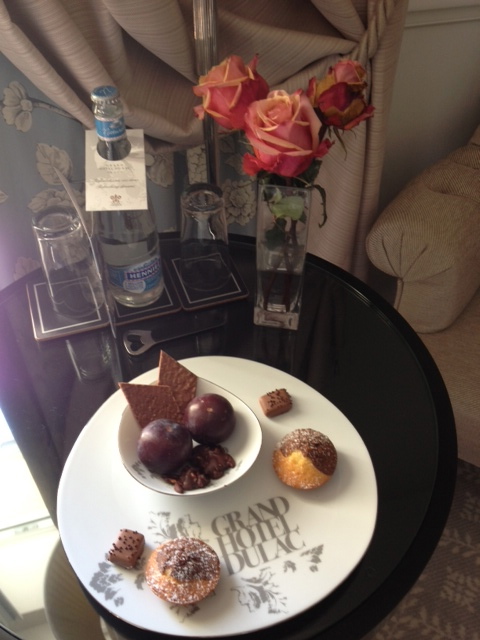 The Lake Geneva region is often referred to as the Swiss Riviera, trying to match the tres chic atmosphere of Antibes and the French Riviera. Walking the esplanade of Vevey, lined with cafes and patisseries on one side and the stupendous vista of the Alps across the Lake Geneva waters, it’s easy to understand the comparison. This is especially true if you stay at two of the most upscale properties in the region,
The Lake Geneva region is often referred to as the Swiss Riviera, trying to match the tres chic atmosphere of Antibes and the French Riviera. Walking the esplanade of Vevey, lined with cafes and patisseries on one side and the stupendous vista of the Alps across the Lake Geneva waters, it’s easy to understand the comparison. This is especially true if you stay at two of the most upscale properties in the region, 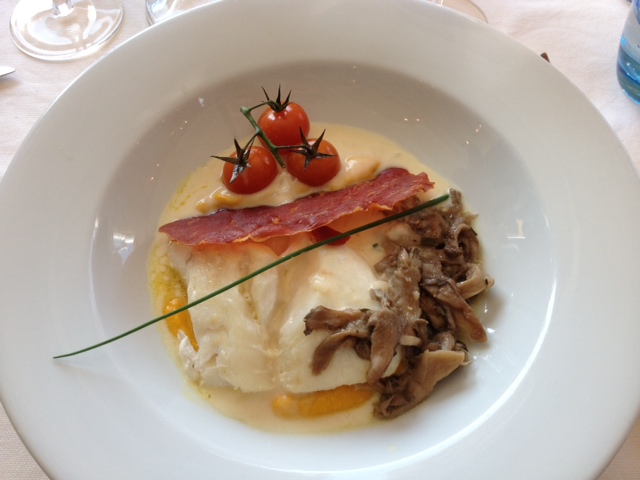 The Vaud or Lake Geneva Region of Switzerland is known for its fine dining, arguably the best in Switzerland. After all, this is the French-speaking side of the country and home to the Lavaux and La Côte wine regions. We had many memorable dishes last week. In the heart of the Lavaux region in the village of Epesses, I loved dining al fresco at
The Vaud or Lake Geneva Region of Switzerland is known for its fine dining, arguably the best in Switzerland. After all, this is the French-speaking side of the country and home to the Lavaux and La Côte wine regions. We had many memorable dishes last week. In the heart of the Lavaux region in the village of Epesses, I loved dining al fresco at  Come winter, Montreux serves as a base for skiers who want the cosmopolitan feel of a city after spending a day on the slopes. It’s only an hour train ride to the exclusive resort town of Gstaad, 90 minutes to Zermatt and the Matterhorn. If you want to stay closer to town, you can simply hop on a train to Aigle and then take the mountain train up to
Come winter, Montreux serves as a base for skiers who want the cosmopolitan feel of a city after spending a day on the slopes. It’s only an hour train ride to the exclusive resort town of Gstaad, 90 minutes to Zermatt and the Matterhorn. If you want to stay closer to town, you can simply hop on a train to Aigle and then take the mountain train up to 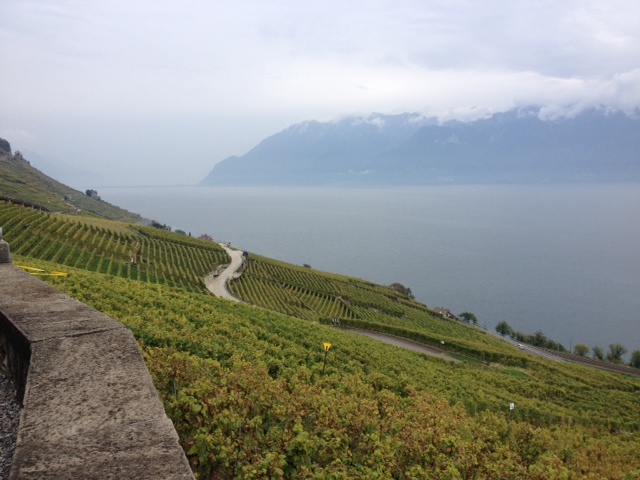 Lavaux’s majestic vineyards are sculpted into the steep hillside like the rice terraces of Bali. Many of the stone walls that hem in the rows of vineyards were first created by monks. The perfect introduction to the beauty of Lavaux is aboard the circa-1910 paddle steamer,
Lavaux’s majestic vineyards are sculpted into the steep hillside like the rice terraces of Bali. Many of the stone walls that hem in the rows of vineyards were first created by monks. The perfect introduction to the beauty of Lavaux is aboard the circa-1910 paddle steamer, 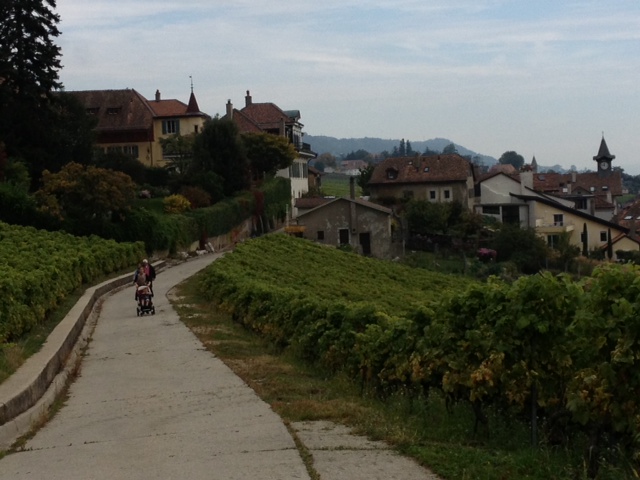 With rows of grapes clinging to the steep mountainside overlooking Lake Geneva, the vineyards of the Lavaux Region certainly deserves its recognition as a UNESCO World Heritage Site. Yet, with that distinction comes an increase in tourism. If you want to bike through vineyards with only locals on charming hillside towns reminiscent of Burgundy, follow in my footsteps and head to the La Côte vineyards just outside the town of Nyon. We
With rows of grapes clinging to the steep mountainside overlooking Lake Geneva, the vineyards of the Lavaux Region certainly deserves its recognition as a UNESCO World Heritage Site. Yet, with that distinction comes an increase in tourism. If you want to bike through vineyards with only locals on charming hillside towns reminiscent of Burgundy, follow in my footsteps and head to the La Côte vineyards just outside the town of Nyon. We 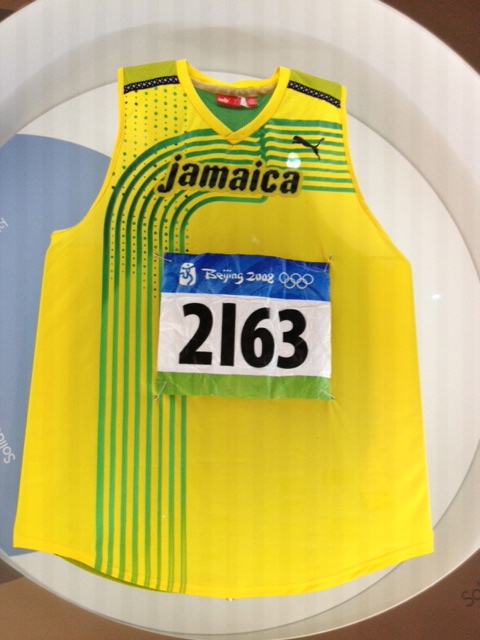 For a city of only 140,000, Lausanne is blessed with 22 museums. Actually 23 museums if you count the archaeologist I met yesterday who opened a one-room museum devoted to the history of shoes, including her recreation of a Neolithic shoe. Home to the International Olympic Committee or IOC, Lausanne’s best known museum is the
For a city of only 140,000, Lausanne is blessed with 22 museums. Actually 23 museums if you count the archaeologist I met yesterday who opened a one-room museum devoted to the history of shoes, including her recreation of a Neolithic shoe. Home to the International Olympic Committee or IOC, Lausanne’s best known museum is the  From the shores of Lake Geneva, or Lac Léman as the Swiss call it, to the forest and duck pond of Lac de Sauvabelin, the city of Lausanne climbs an impressive 800 feet. You climb uphill or downhill on an Escher-like maze of stairwells, narrow cobblestone streets, bridges, even elevators and escalators. Last night, I took an elevator close to my hotel, the
From the shores of Lake Geneva, or Lac Léman as the Swiss call it, to the forest and duck pond of Lac de Sauvabelin, the city of Lausanne climbs an impressive 800 feet. You climb uphill or downhill on an Escher-like maze of stairwells, narrow cobblestone streets, bridges, even elevators and escalators. Last night, I took an elevator close to my hotel, the